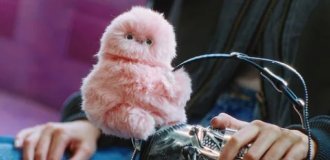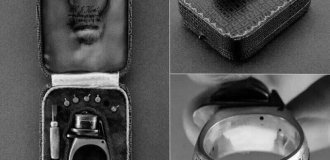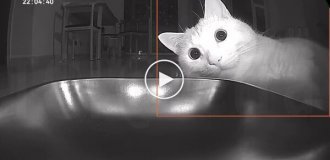In anatomy, the term “heterochromia” refers to differences in the color of the iris, hair and skin. Heterochromia is most often a consequence of either consanguinity or a lack of melanin pigment. In addition, it can be inherited or appear due to genetic mosaicism, illness or injury.
We present to your attention a gallery of photographs of animals (mainly cats and dogs) with two different eyes. These are all examples of heterochromia, which makes the animal unusual and memorable.


1. White domestic cat with eyes of different colors. This type of eye is common among the Turkish Angora and Turkish Van breeds. If a cat's eyes are completely different colors, such a cat is called odd-eyed.

2. A dog of the Siberian Husky breed. For these dogs, odd eyesight is the norm, and is also a “highlight” of the breed.

3. An owl, one of whose eyes is yellow and the other is orange.

4. A very interesting option for combining different eyes with a clearly zoned muzzle color.

5. A Dalmatian dog with eyes of different colors. Different-colored eyes are more common in white-colored animals (but not albinos) or in those whose color includes a large amount of white fur.

6. Heterochromia is generally more common among animals than among humans.

7. As a rule, if an animal has different colored eyes, one eye is blue, and the other is warm, brown, yellow or orange. Cats also have green eye variants.

8. Border collie puppy. For this breed, heterochromia is also a normal variant.

9. Handsome cat with multi-colored eyes.

10. A grown-up border collie puppy.

11. For most dog breeds, odd eyes are a disqualifying feature.

12. Variant of feline heterochromia with blue and green eyes.

13. Adult border collie.

14. Animals with different colored eyes are a popular theme for images on postcards, calendars, advertising brochures and the like. If you require courier delivery of correspondence in Kyiv, Lloyd’s Courier will be happy to provide this service for you.

15. Arctic fox puppy, polar fox.

16. Angora kitten

17. Van-Kedisi kitten

18. Heterochromia can be complete, when the eyes are completely different colors, and also partial or sectoral - when part of the iris is painted one color, and part another. In humans, sector heterochromia is more common.

19. In addition to hereditary heterochromia, eyes can change color due to injury or disease, such as cataracts.

20. And finally – another snow-white cat with different-colored eyes.





















